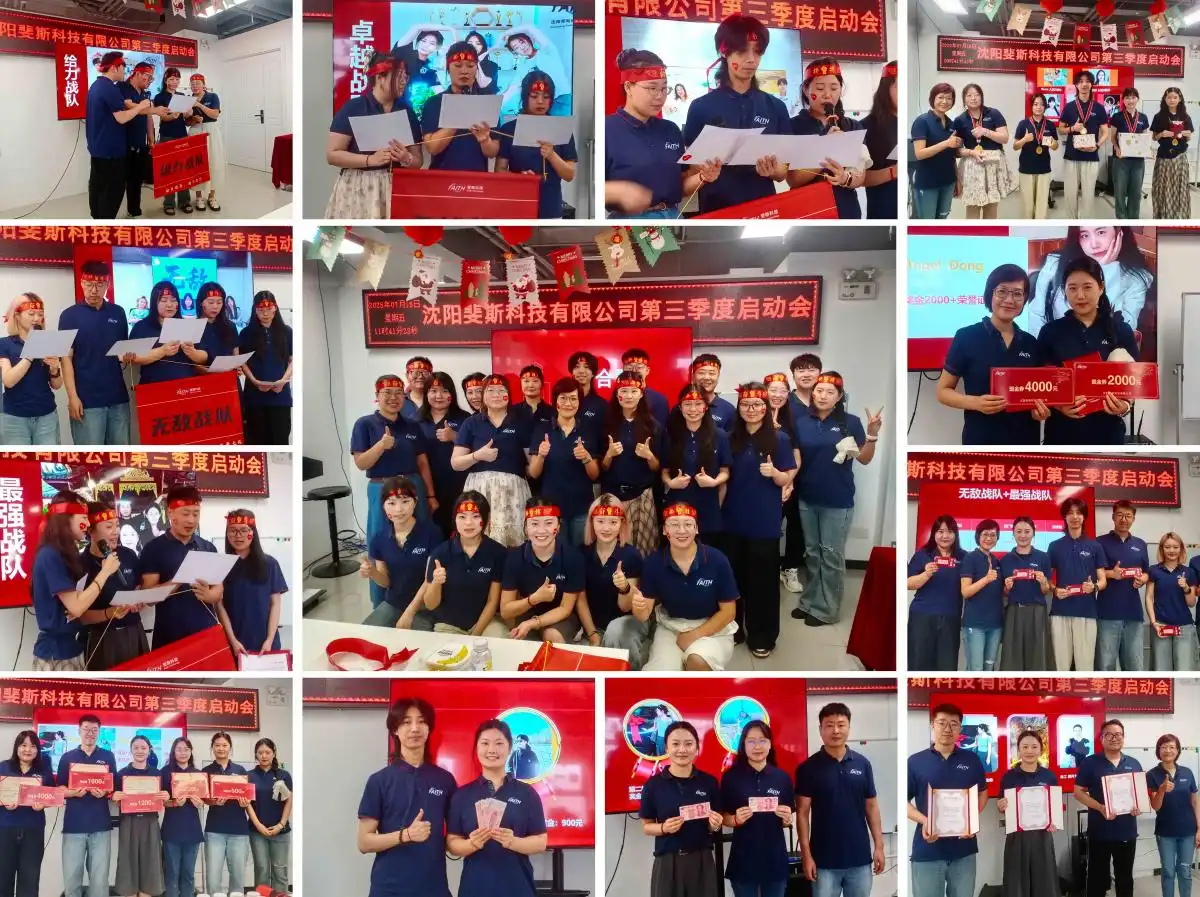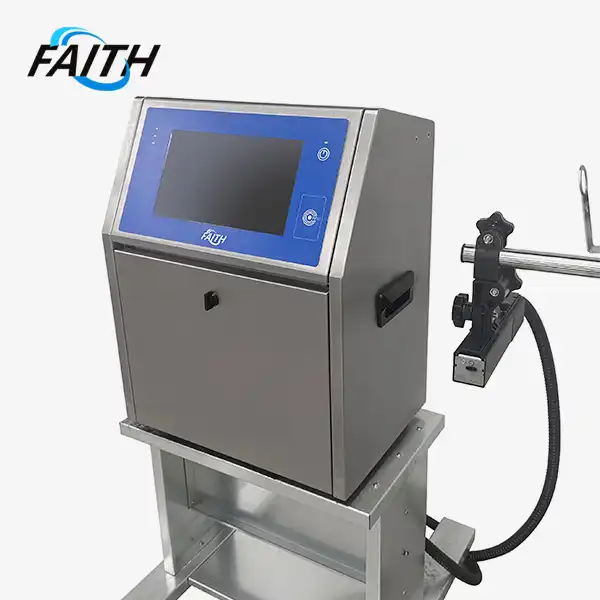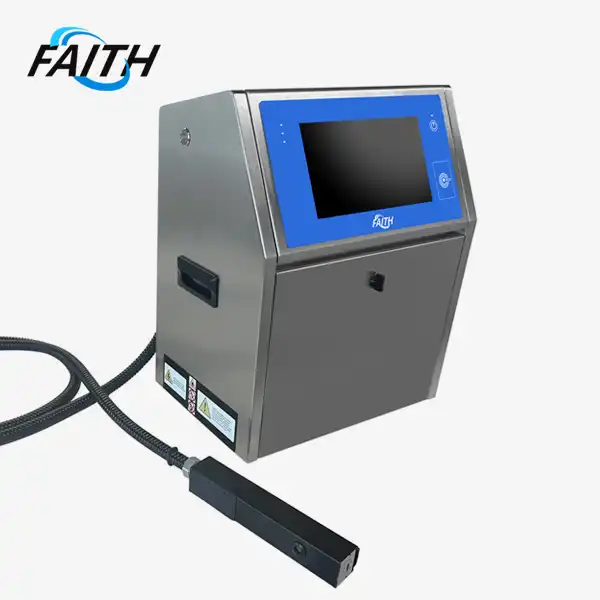Why CIJ Printers Excel in High-Speed Manufacturing?
CIJ (Continuous Inkjet) printers have revolutionized high-speed manufacturing with their unparalleled ability to maintain a continuous, non-contact printing process. These innovative devices enable rapid production rates while minimizing downtime, making them the go-to choice for fast-paced production lines. The combination of speed, reliability, and versatility positions CIJ continuous inkjet printers as a cornerstone in modern manufacturing environments, allowing businesses to meet and exceed production targets efficiently and effectively.
The Technology Behind CIJ Continuous Inkjet Printers
Principles of Continuous Inkjet Printing
CIJ continuous inkjet printers operate on a fascinating principle that sets them apart from other printing technologies. At the core of their functionality is a high-pressure pump that forces liquid ink through a microscopic nozzle, creating a continuous stream of tiny ink droplets. These droplets are then precisely controlled using electrostatic charges, allowing for accurate placement on the substrate.
The process begins with the ink being ejected from the nozzle at high pressure, forming a steady stream. As the stream breaks into droplets, each droplet is individually charged by an electrode. The charged droplets then pass through an electrostatic field, which deflects them to create the desired print pattern. Uncharged droplets are collected and recirculated, ensuring minimal ink waste.
Advanced Features of Modern CIJ Printers
Today's CIJ printers, like the FBP001 model from Shenyang Faith Innovation Co., Ltd., incorporate cutting-edge features that enhance their performance in high-speed manufacturing settings. These advanced capabilities include:
- Multi-line printing: The ability to print up to 4 lines of content with a maximum of 32 dots.
- Versatile nozzle options: Ranging from 40U to 75U, catering to various printing needs, including micro-character printing for small electronic components.
- High-speed printing: Capable of printing at speeds exceeding 500 meters per minute, keeping pace with rapid production lines.
- Automated cleaning systems: Minimizing downtime and maintaining consistent print quality.
- Remote management capabilities: Allowing for seamless integration with automated production systems.
These features collectively contribute to the exceptional performance of CIJ continuous inkjet printers in high-speed manufacturing environments, ensuring consistent, high-quality printing across a wide range of applications.
Advantages of CIJ Printers in High-Speed Manufacturing
Unmatched Speed and Efficiency
The primary reason CIJ printers excel in high-speed manufacturing is their ability to print at astonishing speeds. With print rates often exceeding 500 meters per minute, these devices can keep up with even the most demanding production lines. This high-speed capability is crucial for industries where rapid throughput is essential, such as food and beverage packaging, pharmaceutical manufacturing, and automotive parts production.
The continuous nature of the printing process also contributes significantly to overall efficiency. Unlike other printing technologies that require frequent starts and stops, CIJ printers maintain a constant flow of ink, allowing for uninterrupted operation. This continuous printing capability translates to higher productivity and reduced downtime, enabling manufacturers to maximize their output and meet tight production schedules.
Versatility in Substrate Compatibility
Another key advantage of CIJ printers is their remarkable versatility when it comes to substrate compatibility. These faith printers can effectively mark a wide range of materials, including:
- Porous surfaces: Paper, cardboard, wood
- Non-porous surfaces: Plastic, glass, metal
- Textured surfaces: Fabric, leather
- Curved or irregular surfaces: Bottles, cans, automotive parts
This versatility makes CIJ printers invaluable in diverse manufacturing settings, where a single printer can handle multiple product lines or packaging types. The ability to switch between different substrates without significant reconfiguration or downtime further enhances the efficiency of production processes.
Precision and Reliability in Marking
Despite their high-speed operation, CIJ continuous inkjet printers do not compromise on print quality. They offer high-resolution printing capabilities, producing clear, legible codes and markings essential for product traceability, compliance, and safety labeling. The precision of CIJ technology ensures that even small text, complex barcodes, and intricate logos are reproduced accurately and consistently.
The reliability of CIJ printers is another crucial factor in their success in high-speed manufacturing. Features such as automated cleaning systems and robust construction minimize the need for manual intervention and reduce the risk of unexpected breakdowns. This reliability is particularly important in continuous production environments where unplanned stoppages can lead to significant losses in productivity and revenue.
Cost-Effectiveness and Long-Term Benefits
Initial Investment vs. Long-Term Savings
While the initial investment in a CIJ continuous inkjet printer may be higher compared to some alternative marking technologies, the long-term benefits often outweigh the upfront costs. The efficiency of CIJ printers in ink usage, coupled with their durability and reduced downtime, contributes to significant cost savings over time.
Consider the following factors that contribute to the cost-effectiveness of CIJ continuous inkjet printers:
- Reduced ink waste: The recirculation system in CIJ printers ensures that unused ink is collected and reused, minimizing waste.
- Lower maintenance costs: The robust design and automated cleaning features of modern CIJ printers reduce the frequency and complexity of maintenance tasks.
- Increased productivity: The high-speed operation and minimal downtime translate to higher output and improved overall equipment effectiveness (OEE).
- Versatility: The ability to use a single printer for multiple product lines reduces the need for multiple specialized marking devices.
Over time, these factors can lead to substantial cost savings and a positive return on investment for manufacturers implementing CIJ technology in their high-speed production lines.
Scalability and Future-Proofing
Investing in CIJ technology also offers benefits in terms of scalability and future-proofing manufacturing operations. As production demands increase or new product lines are introduced, CIJ printers can often be adapted or upgraded to meet changing requirements. This adaptability is particularly valuable in industries characterized by rapid innovation and changing regulatory standards.
Furthermore, the integration capabilities of modern CIJ printers, such as the FBP001 model from Shenyang Faith Innovation Co., Ltd., allow for seamless incorporation into Industry 4.0 initiatives. Features like remote management and compatibility with automated production systems ensure that these printers can continue to meet the evolving needs of smart manufacturing environments.
Conclusion
CIJ continuous inkjet printers have firmly established themselves as indispensable tools in high-speed manufacturing environments. Their unparalleled speed, versatility, precision, and reliability make them ideally suited to meet the demands of modern production lines across various industries. While the initial investment may be higher, the long-term benefits in terms of efficiency, cost savings, and adaptability make CIJ printers a smart choice for forward-thinking manufacturers.
As technology continues to advance, we can expect CIJ printers to evolve further, offering even greater speeds, improved print quality, and enhanced integration capabilities. For manufacturers looking to stay competitive in fast-paced industries, investing in CIJ technology is not just about meeting current needs but also about preparing for the future of manufacturing.
To learn more about how CIJ continuous inkjet printers can benefit your high-speed manufacturing operations, or to explore wholesale CIJ printer for your specific needs, don't hesitate to reach out to our team of experts at Shenyang Faith Innovation Co., Ltd. Contact us at sale01@sy-faith.com for personalized advice and information on our cutting-edge CIJ printer models.

FAQ
What makes CIJ printers suitable for high-speed manufacturing?
CIJ printers excel in high-speed manufacturing due to their continuous printing process, high print speeds exceeding 500 meters per minute, and minimal downtime.
Can CIJ printers handle different types of materials?
Yes, CIJ printers are versatile and can print on various surfaces, including porous and non-porous materials like paper, plastic, glass, and metal.
Are CIJ printers cost-effective for long-term use?
While the initial investment may be higher, CIJ printers offer long-term cost savings through efficient ink usage, reduced downtime, and increased productivity.
References
1. Johnson, A. R. (2022). "Advancements in Continuous Inkjet Technology for High-Speed Manufacturing". Journal of Industrial Printing, 45(3), 112-128.
2. Smith, L. M., & Brown, K. P. (2021). "Comparative Analysis of Marking Technologies in Modern Production Lines". International Journal of Manufacturing Engineering, 18(2), 76-92.
3. Chang, W. H. (2023). "Cost-Benefit Analysis of CIJ Printers in Fast-Paced Industrial Settings". Manufacturing Economics Review, 29(4), 203-217.
4. Patel, R. S., & Garcia, M. L. (2022). "Substrate Compatibility and Print Quality in High-Speed CIJ Applications". Advanced Materials Processing, 37(1), 55-69.
5. Lee, J. Y., & Thompson, E. K. (2023). "Integration of CIJ Printers in Industry 4.0 Environments: Challenges and Opportunities". Smart Manufacturing Systems, 14(3), 301-315.
Online Message
Learn about our latest products and discounts through SMS or email
 (7)_1732523674923.webp)


